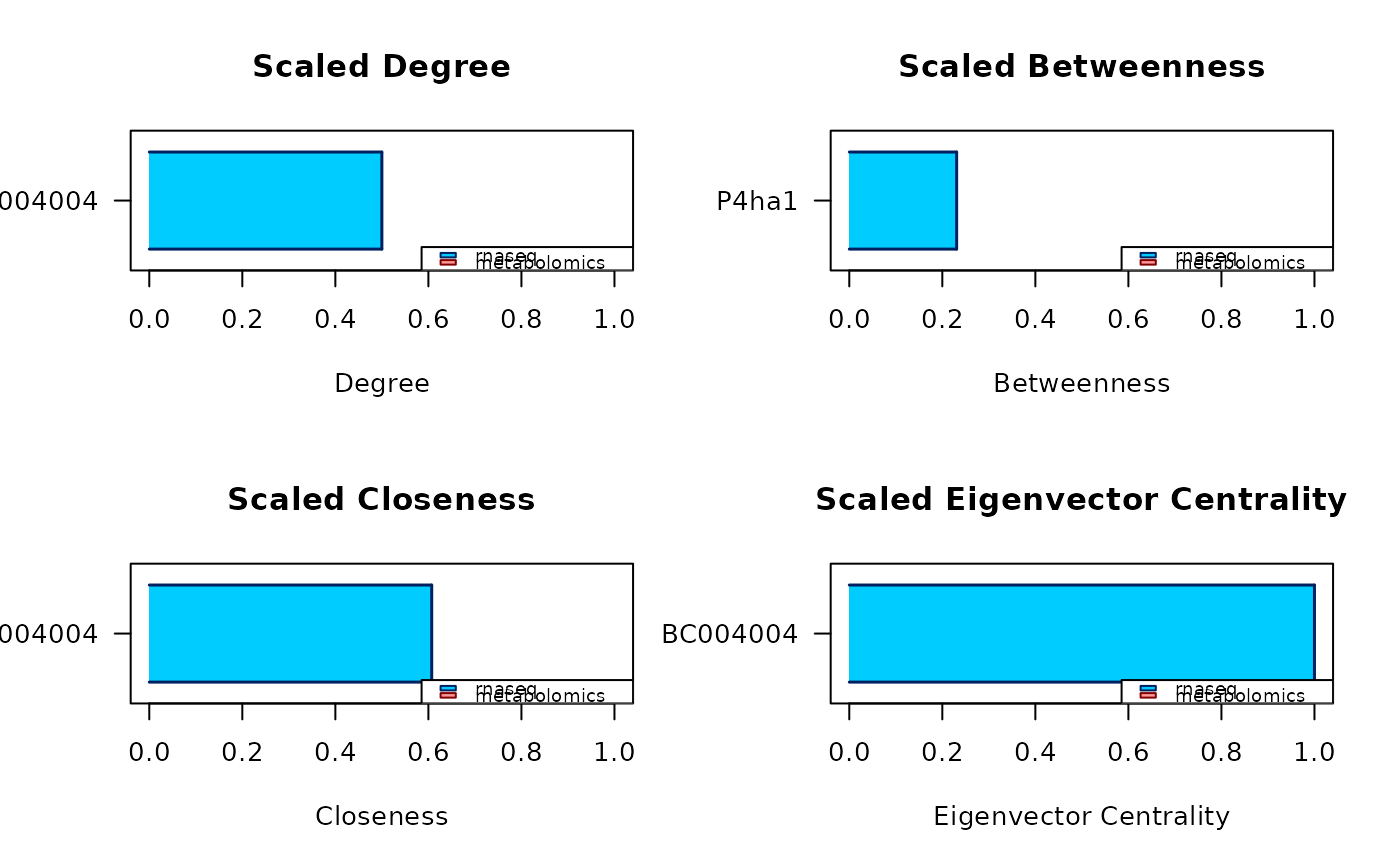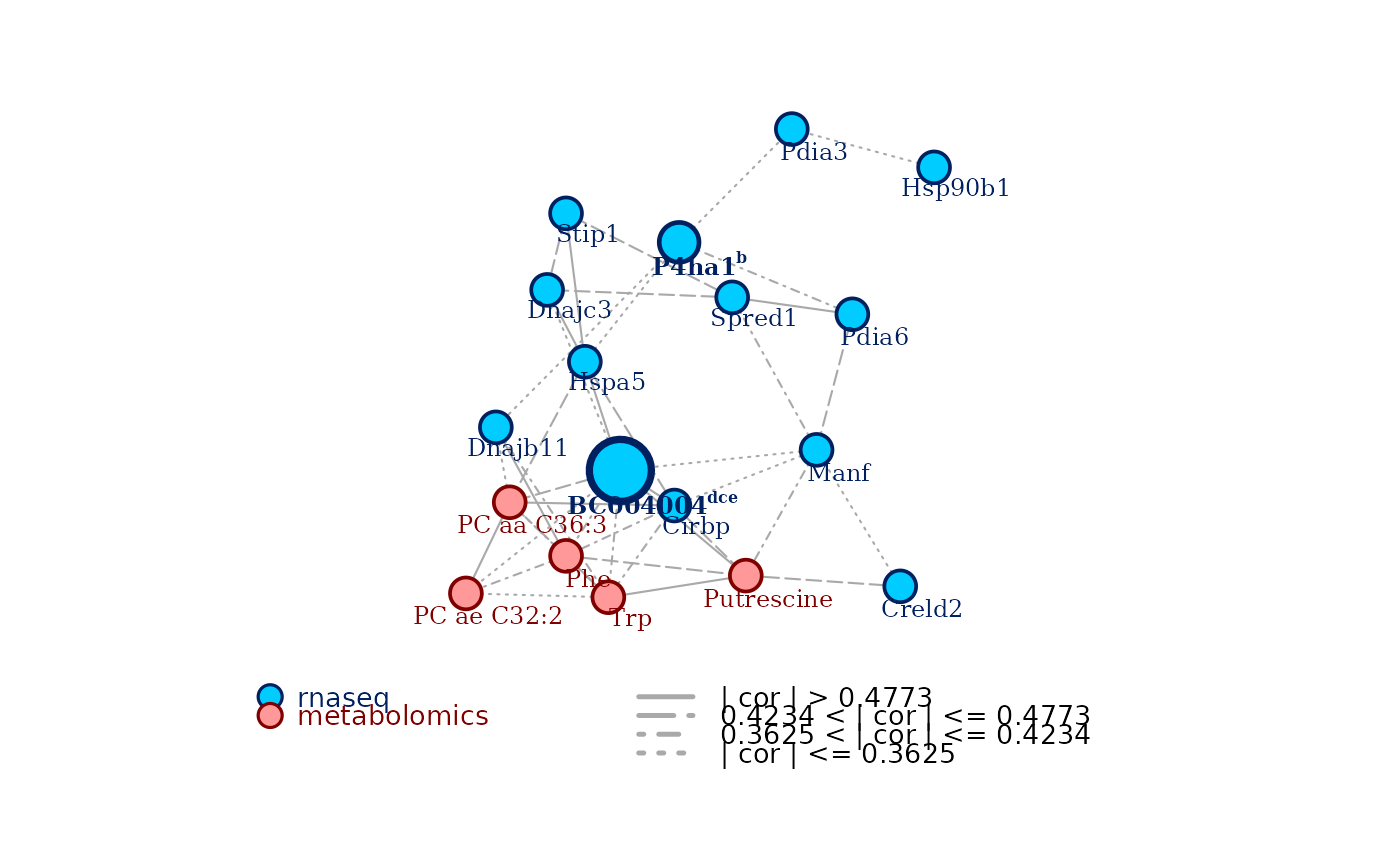Find the top central nodes according to multiple centrality measures of
choice Use a consensus of multiple centrality measures to identify nodes
that could be important in the network obtained through carmon
Usage
compute_centrality(
carmon_obj,
measures = "dbce",
max_candidates = NULL,
quant = NULL,
scaled = TRUE,
verbose = FALSE
)Arguments
- carmon_obj
The object of
S3classcarmon.- measures
A string of characters, each one representing one of four possible centrality measures implemented:
'd'stands for degree centrality,'b'for betweenness centrality,'c'for closeness centrality, and'e'for eigenvector centrality. Default is'dbce', all the four measures.- max_candidates
What is the highest amount of nodes that can be highlighted by each measure, before finding the consensus? Default is 20. When given together with the
quantargument, it overrides thequantargument whenmax_candidatesis smaller than the chosen quantile, it is overrode byquantin the opposite case.- quant
What is the top percentile of nodes that can be highlighted by each measure, before finding the consensus? Default is the top 5%. When given together with the
max_candidatesargument, it overrides themax_candidatesargument when the amount of nodes in the chosen top percentile is smaller than the chosen maximum amount of candidate nodes, it is overrode bymax_candidatesin the opposite case.- scaled
Logical, whether to compute centrality measures as 0-1 scaled values. Defaults to TRUE.
- verbose
The level of verbosity of the centrality analysis.
0suppresses the information output, while1and2give progressively increasing amounts of information about the inner computations happening inside the analysis.
Value
compute_centrality() returns an object of S3 class carmon,
consisting of the input carmon_obj enriched of two new elements:
reportan R data frame. The rows correspond to the nodes identified to be central by the analysis, and they are ordered based on how large is the consensus among the different measures. The data frame has 6 or less columns, depending on whether the respective centrality measures have found any central node:
candidate, the name of the central node;
degree, the degree centrality of the node;
betweenness, the betweenness centrality of the node;
closeness, the closeness centrality of the node;
eigenvector, the eigenvector centrality of the node; and
central for, the a string reporting the first letter of all the measures according to which the node is central for.measures_listan R named list of as many elements as the number of chosen centrality measures, the name of each element being the associated centrality measure. Each element is a named numerical vector, containing the measures of the top central nodes identified in the analysis. The name of each element of the vectors is the name of the node associated to the reported measure.
Examples
# compute_centrality() needs an object of S3 class 'carmon' as an input. The
# following line quickly obtains one.
data(multi_omics_small)
c_obj <- carmon(multi_omics_small,
net_method = "correlation",
cor_quant = 0.25, analysis = FALSE, verbose = FALSE
)
 #> Warning: is.na() applied to non-(list or vector) of type 'expression'
#> Warning: is.na() applied to non-(list or vector) of type 'expression'
 # Then to perform the consensus centrality analysis:
c_obj <- compute_centrality(c_obj)
# Then to perform the consensus centrality analysis:
c_obj <- compute_centrality(c_obj)
